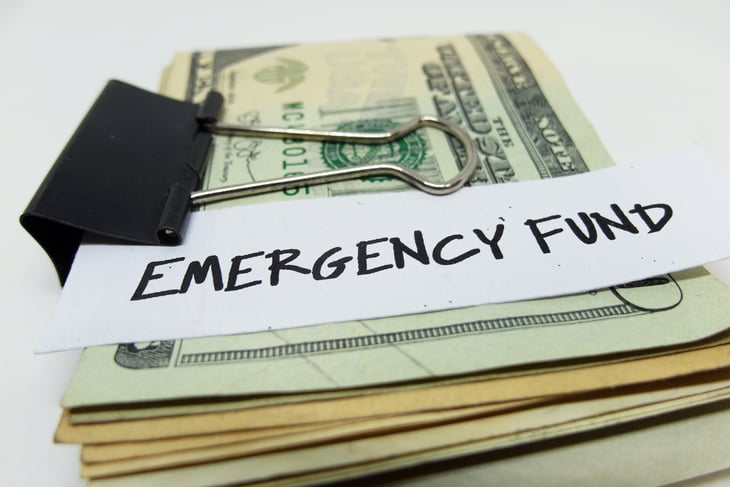
Do you know your numbers — your financial numbers, that is?
Checking and savings account balances, retirement savings, credit score: It’s easy enough to open an app on your phone or get on your computer to find basic numbers like these. But on their own, they won’t offer a complete picture of your finances — or offer much guidance on what to do with your money after you’ve paid your bills.
Read on for several important financial metrics you should be tracking, why they are important and how to calculate them.
Net worth

Why this is worth tracking: This is your real bottom line, and over time, this number shows whether you’re able to meet your financial goals.
How to calculate this figure:
- Add up all of your assets. (Everything you own of significant value: like cash in your bank accounts, your home value, car value and retirement accounts.)
- Add up all of your liabilities. (All of your debts and outstanding balances, like student loans and mortgage and credit cards.)
- Subtract your total liabilities from your total assets.
If your net worth is negative, figure out where you’re overspending. Here are “6 Things That Kill Your Net Worth.”
Review your net worth at least once a year, or more often when you can. A positive net worth is a good start, but it’s just a snapshot. You need to see that number consistently going up over time to know whether you’re on track to meet your goals.
Emergency fund

Why this is worth tracking: Life happens, and emergencies can derail your financial plan. It’s easier to relax and take problems in stride when you know you have the money set aside for them.
How to calculate this figure:
- Add up all your monthly expenses. (This includes your housing payment, car loan, insurance, etc. For expenses you only pay annually, divide by 12 to get one month’s cost.)
- Multiply your total monthly expenses by six. This is your recommended goal for an emergency fund.
Setting aside some extra cash in your emergency fund can ensure you’re able to pay your regular bills on time.
Need help calculating your emergency fund amount? Use this tool to figure out how much you need to set aside. It’s OK to start small. Even $500 to cover an insurance deductible, or to help pay for an unexpected home repair, makes a difference.
Debt-to-income ratio

Why this is worth tracking: This ratio is a big factor in whether lenders will give you money, and at what rate.
How to calculate this figure:
- Add up all your monthly debt payments.
- Divide the total monthly debt payment by your gross monthly income.
- Multiply the result by 100. This is your debt-to-income (DTI) ratio as a percentage.
Ideally, you want to end up with a figure below 36%. The lower, the better.
A high debt-to-income ratio will make it difficult to be approved for a loan, and even if you are, can mean a higher interest rate or lower credit limit. Read “7 Easy Ways to Stay Out of Debt” for ways to lower your DTI.
Savings rate

Why this is worth tracking: Saving more of your income means reaching your financial goals faster.
How to calculate this figure:
- Subtract all of your monthly expenses — not just bills, but every dollar you say goodbye to — from your total monthly income. This is what you are not spending.
- Divide this savings amount by your total monthly income.
- Multiply the result by 100. This is your savings rate as a percentage of your income.
Savings can be difficult to build when you’re living paycheck to paycheck and with rising inflation, you may find it even harder. But if you want to step away from the workforce some day, you’ll probably need to save more. Start small and be consistent. Take the long view: $27.40 a day can add up to $10,000 a year!
Housing ratio

Why this is worth tracking: Your housing payment is often the largest monthly expense. If your housing ratio is too high, your budget is likely stretched.
How to calculate this figure:
- Add up housing costs. For homeowners, this means your principal and interest payment, homeowners insurance, property taxes and HOA fees. For renters, use your monthly rent payment and renters insurance.
- Divide the housing cost total by your total gross income.
- Multiply the result by 100. This is your housing ratio as a percentage of your income.
Try to keep your housing expenses at less than 30% of your income and your total living expenses under 50% of your budget. You can read more about the traditional 50/30/20 budgeting method at the Consumer Financial Protection Bureau (CFPB) website.
This ratio and your DTI ratio are used in determining what amount you could qualify for on a mortgage.
Asset allocation percentages

Why this is worth tracking: Maintaining the right percentages of bonds, cash and stocks can help you reach your long term financial goals at a risk level you are comfortable with.
How to calculate this figure:
- Add up the total current value of all your investments.
- Add up the total current value of your investments in stocks.
- Divide your total stock value by your total investment value, then multiply the result by 100. This is the percentage of your portfolio in stocks.
- Repeat steps 2 and 3 for bonds and cash/liquid investments.
Your asset allocation reflects the amount of risk you’re taking with your money. These numbers generally shift as you move closer to retirement, when you’ll need money sooner. They also change every time you purchase or sell an investment, and so must be periodically rebalanced.
These questions will factor into what the numbers look like:
- What are your goals? ( When do you want to retire or buy that vacation home?)
- When do you want to reach your goals? (This is your time horizon.)
- What is your risk tolerance for investing? (How scary is the idea of losing money you have in stocks?)
There is no one “correct” ratio for your assets. There are rules of thumb for asset allocation, often based on your current age. For example, one traditional formula is subtracting your age from 100 to get the percentage of your portfolio that should be in stocks. You can learn more in “My Retirement Savings Are Shrinking. Should I Worry?” and use this tool to calculate a balanced portfolio.




Add a Comment
Our Policy: We welcome relevant and respectful comments in order to foster healthy and informative discussions. All other comments may be removed. Comments with links are automatically held for moderation.